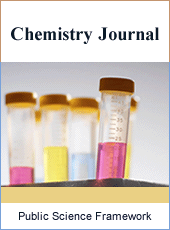Chemistry Journal
Articles Information
Chemistry Journal, Vol.1, No.3, Jun. 2015, Pub. Date: Apr. 22, 2015
Thermochemical Boriding of Iron–Chromium Alloys
Pages: 81-89 Views: 5856 Downloads: 1501
[01]
V. I. Dybkov, Institute of Problems of Materials Science, National Academy of Sciences of Ukraine, Kyiv, Ukraine.
Thermochemical boriding of iron–chromium alloy (5, 15 and 30%Cr) samples in boron powder at 850–950ºC and reaction times 3600-43200 s leads to the formation on their surface of two boride layers. In the case of 5 and 15% Cr alloys, the outer layer bordering boron consists of the FeB compound, while the inner adjacent to the alloy base consists of the Fe2B compound. Each boride layer is a homogeneous phase (microstructure of the first kind). With a 30% Cr alloy, the outer layer comprises the FeB and CrB compounds, while the inner comprises the Fe2B and Cr2B compounds. Each boride layer is two-phase (microstructure of the second kind). In the case of a 5% Cr alloy, the FeB and Fe2B layers occur sequentially, with the Fe2B layer being the first to form and grow. The continuous FeB layer is only formed if the thickness of the Fe2B layer exceeds, depending on the temperature of reaction, 100–180µm. With 15 and 30% Cr alloys, a reaction time of 3600 s is sufficient for both the FeB and Fe2B layers to occur. The characteristic feature of the layers is a profound texture. Their growth rate obeys a parabolic relation. Boride layers with the microstructure of the second kind exhibit a higher dry abrasive wear resistance than those with the microstructure of the first kind.
Iron-Chromium Alloys, Boride Layers, Structure, Chemical Composition, Mechanism of Formation, Growth Kinetics, Dry Abrasive Wear Resistance
[01]
L. G. Voroshnin, L. S. Lyakhovich, Boriding of Steel, Metallurgiya, Moskwa, in Russian, 1978.
[02]
A. G. Matuschka, Boronizing, Carl Hanser Verlag, Munchen, 1980.
[03]
K. Holmberg, A. Matthews, Coatings Tribology, Elsevier, Amsterdam, 2009.
[04]
M. Carbucicchio, G. Sambogna, Thin Solid Films 126 (1985) 299-305.
[05]
C. M. Brakman, A. W. J. Gommers, E. I. Mittemeijer, J. Mater. Res. 4 (1989) 1354-1370.
[06]
M. Kulka, P. Pertek, Appl. Surf. Sci. 214 (2003) 278-288.
[07]
C. Martini, G. Palombarini, M. Carbucicchio, J. Mater. Sci. 39 (2004) 933-937.
[08]
X. Tian, Y. Lu, S. J. Sun, Z. G. Wang, W. Q. Hao, X. D. Zhu, Y. L. Yang, Mater. Sci. Techn. 24 (2008) 314-319.
[09]
C. K. N. Oliveira, L. C. Casteletti, A. Lombardi Neto, G. E. Totten, S. C. Heck, Vacuum 84 (2010) 792-796.
[10]
J. Jiang, Y. Wang, Q. Zhong, Q. Zhou, L. Zhang, Surf. Coat. Techn. 206 (2011) 473-478.
[11]
I. Campos-Silva, JESTECH 15 (2012) 53-61.
[12]
V. I. Dybkov, W. Lengauer, K. Barmak, J. Alloys Compd. 398 (2005) 113-122.
[13]
J. Brandstötter, W. Lengauer, J.Alloys Compd. 262-263 (1997) 390-396.
[14]
V. I. Dybkov, Reaction Diffusion and Solid State Chemical Kinetics, 2nd ed., Trans Tech Publications, Zuerich, 2010.
[15]
V. I. Dybkov, Chemical Kinetics, IPMS Publications, Kyiv, 2013. Free online version http://www.dybkov.kiev.ua.

ISSN Print: 2381-7674
ISSN Online: 2381-7682
Current Issue:
Vol. 6, Issue 1, March Submit a Manuscript Join Editorial Board Join Reviewer Team
ISSN Online: 2381-7682
Current Issue:
Vol. 6, Issue 1, March Submit a Manuscript Join Editorial Board Join Reviewer Team
| About This Journal |
| All Issues |
| Open Access |
| Indexing |
| Payment Information |
| Author Guidelines |
| Review Process |
| Publication Ethics |
| Editorial Board |
| Peer Reviewers |


